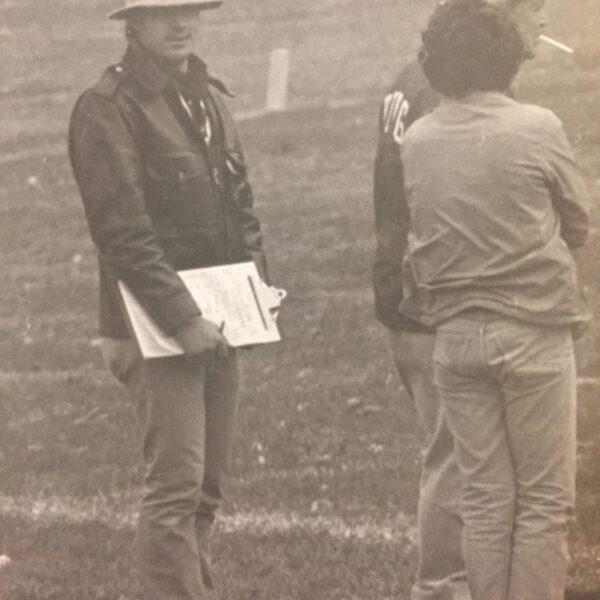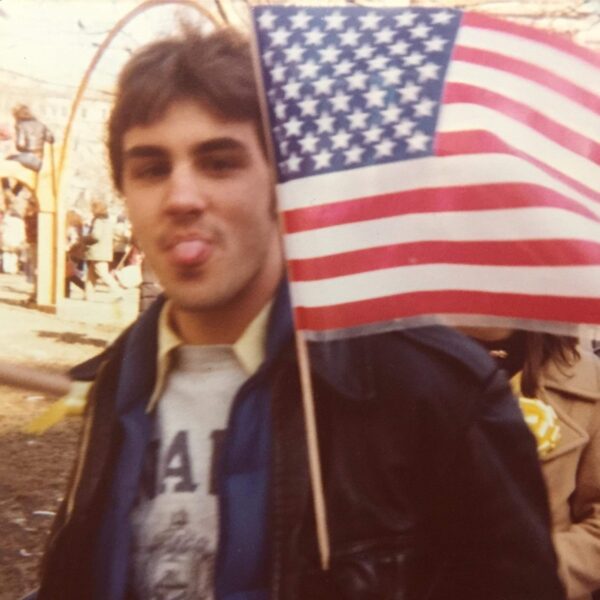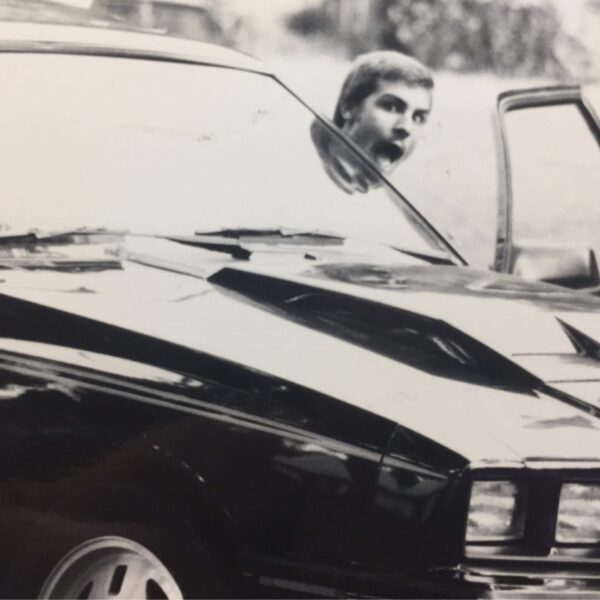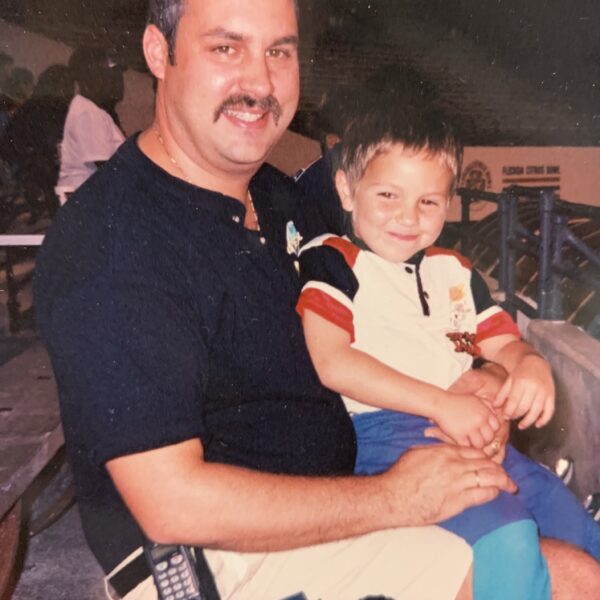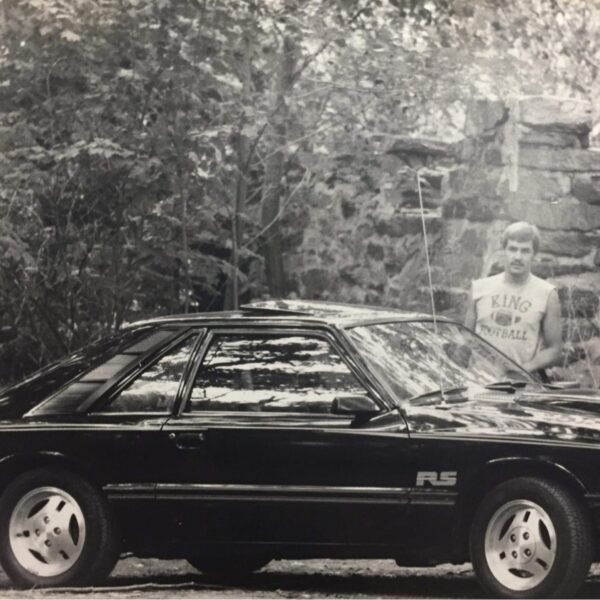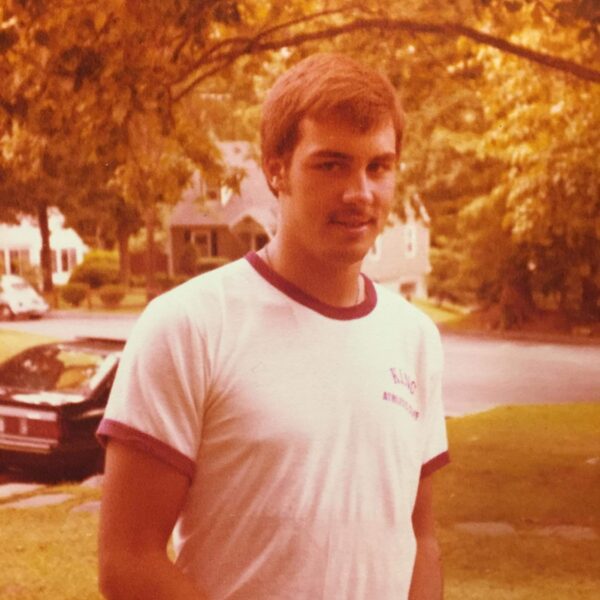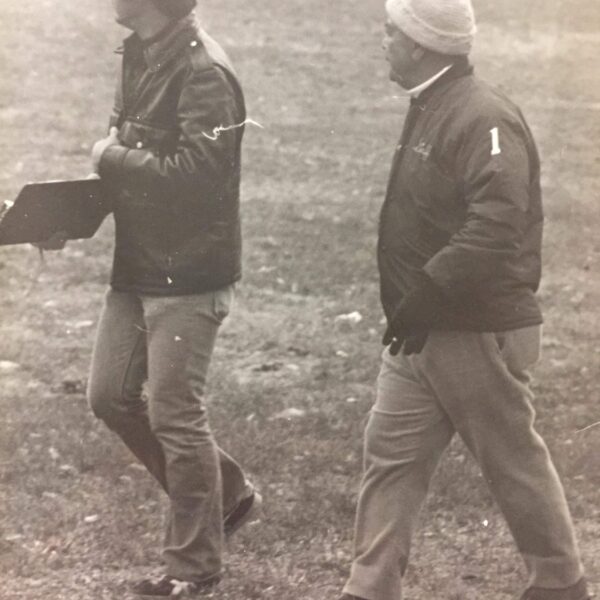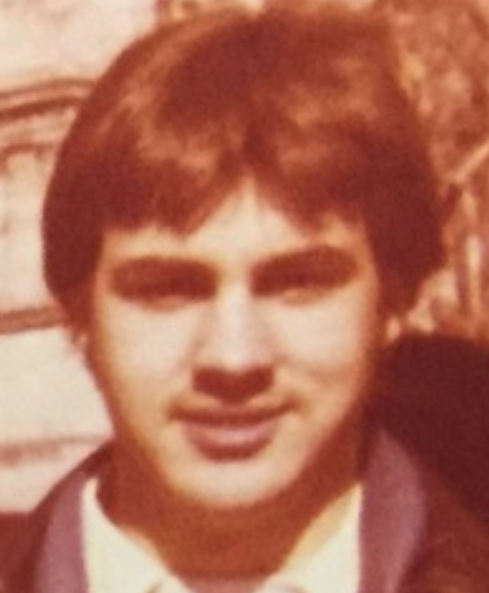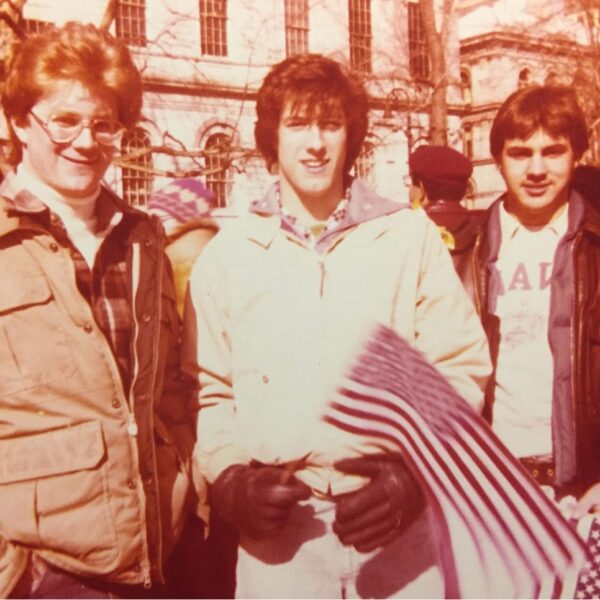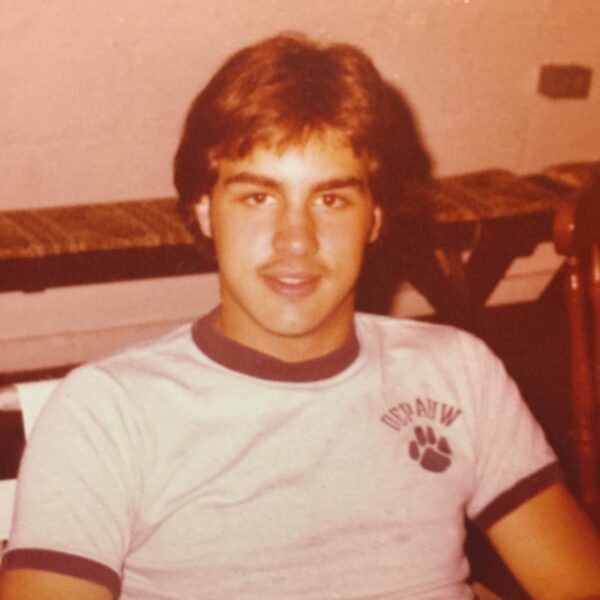Meet Roy Schindele
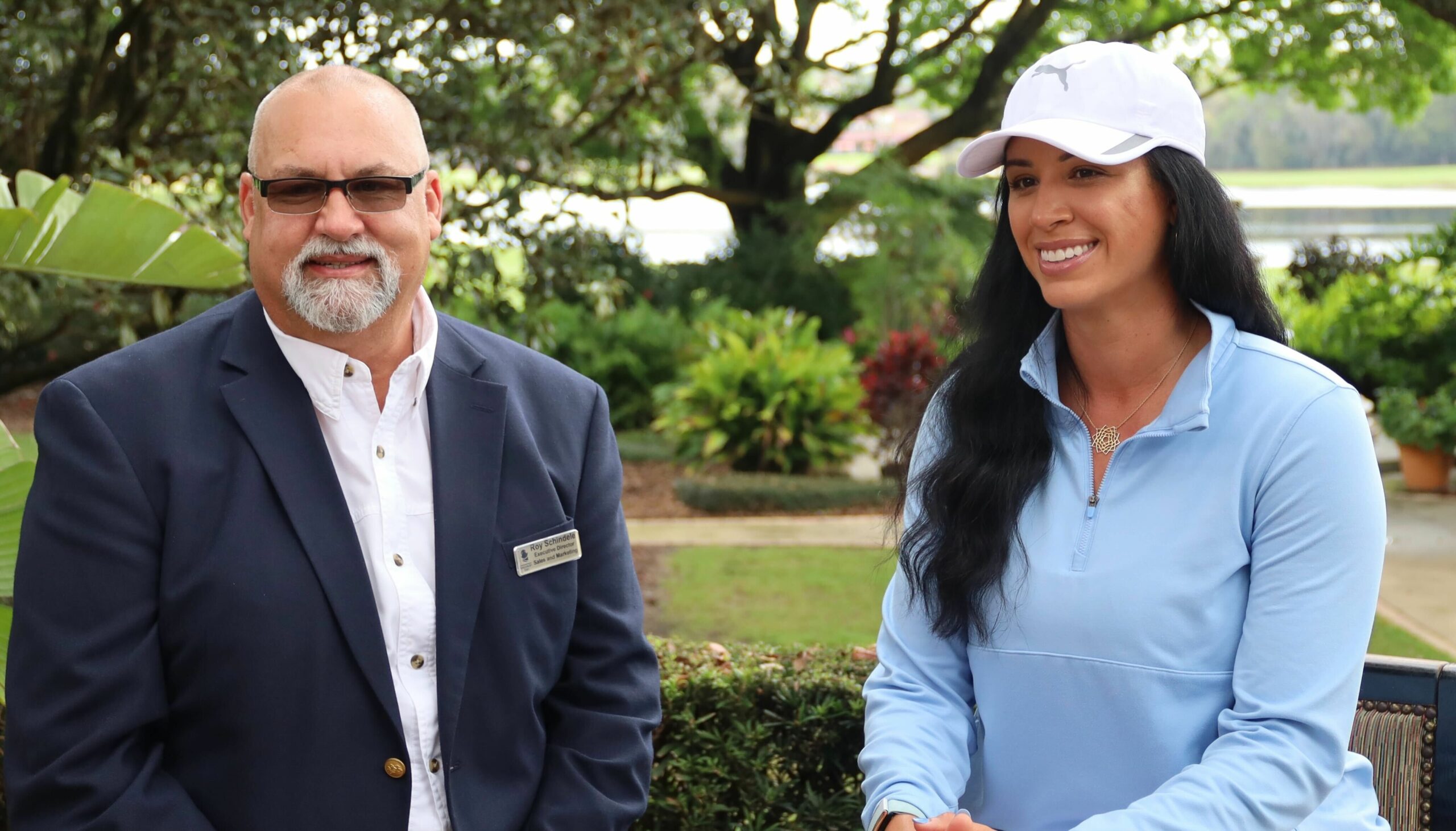
Roy Schindele’s life story is one of resilience, determination, and hard work. Born on September 8th, 1962, he is the first generation in his family to be born in the United States of America. His parents, Ernst and Lore, had a unique and challenging start to their own lives.
Ernst and Lore met when they were just 14 years old while attending a Hitler Youth Camp just outside of Stuttgart, Germany in 1941. At the time, the war was getting worse, and the recruitment age was getting younger and younger. Right around Ernst’s 16th birthday, he was “signed up” for the Luftwaffe, which was more like being “rounded up.” When asked if he had any special talents, he replied that he had been glider flying since he was 12. With that bit of news, they assigned him to the Luftwaffe and put him in a Messerschmitt 109. Being as young as he was, he flew mainly reconnaissance and support but nonetheless managed to get shot down at least once.
Meanwhile, Lore lived in downtown Stuttgart and was helping her family businesses and her home survive. It was all too often that she had to go on the roof of their house to put out fires after the air raids or to help get furniture out of a building that was not so lucky and engulfed in flames. They both survived the war and, after the occupation, did a relatively unpopular thing. They befriended the GIs. They even volunteered when needed in the motor pool or in some other way. They went so far as to invite the Americans into their home for meals and holidays and even took them on vacation to see some of the countryside and other cities in Germany.
For years after the GIs returned to the United States, they unilaterally kept in touch. By the early ’50s, the relationships forged sparked a reciprocal gesture, and the Americans offered to sponsor Ernst and Lore to come and see The United States of America. It was a way for them to repay the kindness they had shown them across the ocean during a difficult time. It was in 1956 that the Schindeles first arrived in New York City and saw the welcoming figure of the Statue of Liberty after a long journey by boat, symbolizing they’d arrived in a new land, the land of opportunity.
They were taken in by the McDowell family, who happened to live in Scarsdale, NY. They learned about America, saw some of America, and fell in love with America. In no time at all, they brushed up their English and got jobs. Lore was a bookkeeper, and Ernst was an engineer. They were introduced and hired by Ester Williams and took residence in White Plains, New York. Ernst designed her signature pools, and Lore did her books. They both realized in America there are no limits to what can be accomplished if you’re willing to put in the work.
In 1961, Ernst got a job for Link in Bingham, NY. He was part of the team that developed the RAN & RAAF Series flight simulators for the US Military famously called the “Link Trainer.” In 1964, they relocated back to New England from Upstate NY, calling Samford, CT home. Ernst took a job working for Barnes Engineering and as part of the Aerospace division, helping to design the Apollo Moon Mission navigational systems.
Roy grew up in a predominantly immigrant neighborhood, where the residents were mostly German. He was fascinated by their culture and admired their work ethic. From professionals like his parents to bricklayers, bakers, and builders, all of them worked tirelessly to make a living. Manfred Kergel, a stone worker, was one such person who worked six to seven days a week for ten to twelve hours a day. Over the years, irrespective of their profession, most of them became millionaires.
At a young age, Roy was instilled with a sense of heritage and pride in his roots. He had to attend “Deutsch Stunde” after school, which translated to “German hour,” where he read and wrote something, like a note to his grandmother, and spoke a little German with his mother. Roy resented that he had to spend an extra hour after school, while his friends played. Later, he appreciated the effort his mother put in and was grateful for the trips he made to Germany, where he could speak to his relatives and understand their culture.
As Roy grew up, he imbibed the lesson that hard work, goal-setting, and prioritization were the keys to business success. Personal success, for him, meant giving one’s best, enriching oneself, having faith in God, helping others compassionately, and contributing to society by volunteering in the community where one lives.
In the early 1970s, Roy’s father Ernst was hired by a company that had been created by a group of Wall Street investors. The company, Fairfield Surgical and Medical Electronics Corporation, developed a wall-mounted rail system for medical equipment management. Ernst earned several patents for this invention, but the investors ran the company into bankruptcy. Ernst bought out the patents and restarted the company from the garage of their house.
Roy began working for the family business while he was in Roxbury Elementary School in Stamford, CT. He assembled clamp components after school and earned two cents per piece he assembled. Sometimes he assembled hundreds of pieces a day. Roy also accompanied his dad to make presentations at various ambulance corps, introducing the concept of his equipment management system. Soon, ambulance manufacturers began making it a standard part of their new vehicles, and it was recognized as a national federal standard by Mr. Leo Schwartz, Chief of the National Highway Traffic Safety Administration Emergency Medical Services. Roy even accompanied his dad to the US Capitol to meet Mr. Schwartz on several occasions.
As Roy grew older, he worked more and learned more about the family business, which now had an office and a machine shop for in-house manufacturing of the rail system and all the equipment adaptors. Roy had “training” doing assembly work, and he spent several summers doing just that in the factory. He learned how to use a lathe, drill press, sandblasting machine, belt saw, and many other machines under the watchful eye of Mr. Jim Swanston, a Master Machinist and shop foreman. Roy worked in various departments, from shipping and receiving to the purchasing department, accounts receivable, accounts payable, general accounting (with mom), and finally, operations. All of this happened in just ten years.
Roy Schindele grew up in Stamford, Connecticut, where he spent much of his childhood on and around the water. His father, Ernst Schindele, was an inventor and entrepreneur who had a passion for boating and a drive to solve problems. In the early 1970s, Ernst became aware of a critical gap in emergency medical services on the water. While police, coast guard, and power squadrons all had boats to respond to aquatic emergencies, none were equipped to provide advanced medical care on the water.
Ernst decided to take matters into his own hands and bought and equipped the first marine ambulance that was as well-equipped as a land-based emergency room. This vessel, which Ernst named the Star of Life 1, was designed to provide advanced aquatic medical services, including in-water CPR and backboard immobilization techniques that were perfected and shared with the US Coast Guard and marine police.
Ernst’s solution to this critical gap in emergency medical services on the water inspired his son, Roy, to take action. In 1977, at the age of 15, Roy filed the paperwork to formally begin the Star of Life Flotilla. The Star of Life 1 patrolled every weekend in a 150 square mile area of Long Island Sound and attended special events from New York City to Block Island, Rhode Island, to be on standby for things like the 4th of July at the Statue of Liberty or offshore powerboat and sailboat races.
Roy first served on board as a first-aider, at 16 became an accredited EMT (Emergency Medical Technician), and at the same time became a Captain, making him the youngest rescue vessel captain on the Eastern seaboard. This was the weekend routine of volunteering with doctors and nurses from Connecticut, New York, and New Jersey and hosting guests and dignitaries from all over the world.
Over the years, the Star of Life responded to more than 1800 calls and was credited with saving over 40 lives. Roy and Ernst’s volunteer work and financial commitment created a solution and roadmap for how to provide advanced aquatic medical services. The in-water CPR and backboard immobilization techniques they developed were shared with the US Coast Guard and marine police, many of which are still used today. Boats were designed with breakaway transoms and davits to make in-water immobilization possible.
In 1979, the US Virgin Islands requested that the Schindeles build and equip a Star of Life 2 to transfer patients from St. John to St. Thomas because all too often people would die unnecessarily while in transport. Roy and his father would go to St. Thomas and St. John to work with Kirk Grybowski, Director of the Emergency Medical Program for FEMA and the USVI, to share best practices with the crew and train them in their revolutionary in-water rescue techniques.
When Roy finished high school in 1981, he tried to manage working full-time and going to college. He started at the University of Connecticut and then transferred to Marymount College of New York. However, the business and “money bug” made continuing school difficult, and he ended up dropping out to dive deeper into work.
By the age of 24, Roy was Director of Operations and had more than 50 people in the department to manage. He was also good with his hands and spearheaded field installations and medical facility renovations, modernizing iconic hospitals like Andrews Airforce Base in DC, Sloan Kettering in New York City, and Queens Medical Center Honolulu Hawaii, to name a few.
In 1986, the thriving business and Ernst’s 16 patents gained recognition in the industry, attracting the attention of MillCare, a wholly-owned subsidiary of Herman Miller. MillCare made an offer to purchase the Schindele family’s business, which they accepted, fulfilling their American dream after more than 20 years of hard work building a successful enterprise.
After the acquisition, Roy served as a consultant for the new owners for nearly two years. However, he eventually realized that he preferred working in a family business environment over the impersonal corporate culture of a Fortune 500 company.
After experiencing a setback in his previous business venture, Roy yearned to be back in the entrepreneurial game. During a trip to Europe, he came across a cuff-like earring that didn’t require a post or clip to be worn. Intrigued by the unique design that utilized the anatomy of the ear, Roy saw potential in this earring as a new alternative in the fashion industry.
He trademarked the name EARLING and filed design patents. With engineering drawings and plans in hand, he struck a deal with a manufacturer in Rhode Island to create over 100,000 pieces. Packaging and marketing materials were created, and Roy went off to fashion shows and buyer’s marketplaces in major cities to showcase his innovation.
He even went door to door to small boutiques in New England, from his home base in Stamford, Connecticut, where his basement was converted into an inventory and assembly warehouse. The EARLING gained interest, and purchase orders came in from major retailers like Macy’s, Claire’s boutiques, and even Walt Disney World, where they were proudly displayed and sold on outdoor carts throughout the parks.
As the product gained notoriety, magazines and news outlets began to take notice. Roy’s innovation was featured in the Village Voice NYC and numerous fashion magazines nationwide. He even made television appearances on local news stations in Norwalk, CT, and national news on LIVE with Kathy Lee and Regis Feldman.
High-end retailers expressed interest, and Roy found a partner in Mexico MODA Designs to create a silver jewelry EARLING line. But something unexpected happened during Roy’s EARLING journey. On the heels of his successful sales call to Walt Disney World, he fell in love with the Orlando area and put a deposit down on a lakefront property in a subdivision called Indian Wells.
After a year, Roy moved into his new home in Kissimmee, Florida, just 2 miles from Disney. As he acclimated to his new surroundings, Roy realized that tourism was the lifeblood of the city. With visitors coming from all over the world, he saw the potential to capitalize on this booming industry.
He sold his EARLING business to his Mexican partner and filed for a “seller of travel” license with the state of Florida to start a new venture called IFC International Florida Connections, a travel company. His concept was to become an inbound tour operator, making all the ground arrangements for customers from other countries when they visited Central Florida, including transportation to and from the airport, hotel reservations, attraction tickets, and more.
Roy’s initial plan was to foster connections back to his heritage in Germany and utilize his bilingual skills to his advantage. And with hard work and determination, Roy’s travel business flourished, making him a successful entrepreneur once again.
In 1993, Roy Schindele was faced with the question of how to start a business in an established market in a way that would make people take notice. He discovered that Orlando had been selected as one of the venues for the World Cup 1994 and thought this would be a great opportunity for his business to shine on the world stage. He contacted FIFA and was offered the opportunity to become an authorized World Cup tour operator, which he accepted. Roy committed to buying several hundred thousand dollars worth of tickets for various stadiums in different cities, not knowing which teams would play where as it was determined by the luck of the draw. Only 16 businesses committed to this opportunity and IFC, the company Roy founded, was one of them.
IFC became a well-respected inbound destination management company for the World Cup, receiving requests to make arrangements for soccer teams themselves, including the defending champions Spain, who wanted to stay at a remote resort rather than the Olympic village. Roy found them a place at the mission inn resort and club, where he would work 30 years later as a sales and marketing consultant. IFC was also contracted by Ireland to manage 1200 fans who wanted to follow the team from Orlando to New York. Roy accomplished the mission of getting IFC established in the marketplace as a respected company in the travel industry.
IFC recognized the trend of vacation rental homes in Orlando and began soliciting customers for that particular market. Some inbound customers expressed interest in purchasing a house through IFC, so Roy started a real estate brokerage and a property management company that maintained the whole house from pool cleaning to landscaping, maid service, and bill payments. All three divisions of IFC worked efficiently and effectively together. After 9/11, Roy sold the Real Estate, Property Management Company, and Travel Components of IFC.
Roy enjoyed the world of travel and since IFC had hundreds of wholesale agreements with hotels, he decided to offer services to a hotel and share with them what he had learned as a receptive tour operator to help them gain more market share and increase sales. Roy started with the Grovenor resort in Lake Buena Vista, which was struggling at the time. After three years of working there, the company emerged from bankruptcy successfully and was sold, now known as the Wyndham Resort in Downtown Disney.
Roy’s transition to Arnold Palmer’s Bay Hill Club and Lodge was unique. He attended a trade show where he met two delightful women, Leanne Huckabee and Carol Laskey, who were the membership director and marketing manager for Arnold Palmer’s Bay Hill Club and Lodge. After several chance meetings, they suggested that he take a look at the director of sales and marketing position that was open at Bay Hill. At first, Roy dismissed the idea, but after doing some research and learning that Arnold Palmer lived there, he was intrigued. Roy visited the property, and everyone from the bellman to the front desk greeted him by name, leaving him with a great impression of the property and the general manager Ray Easler’s attention to detail.
During the final meeting, everything appeared to be going smoothly until the discussion turned towards cultural and interpersonal aspects. The group asked me who I admired, how I interacted with people in general, and whether there were any particular types of individuals that posed issues for me. I responded by pointing towards the food and beverage director, Fred, and stating that we were likely to clash. This caused a noticeable shift in the atmosphere of the room as the smiles and promise on people’s faces seemed to fade away. The group probed further, questioning why I would be in conflict with Fred and what he had done to deserve such attention from me.
I explained that if I were in sales and marketing, I would aggressively pursue deals and arrangements, even if they were unconventional, particularly in the realm of food and beverage. On the other hand, the food and beverage department is responsible for organizing and systematizing food purchases and preparation, prioritizing efficiency above all else. In my opinion, these two departments have opposing goals and objectives.
For instance, if a customer requested eggs Benedict prepared in an unconventional way, the sales department might agree to the request and add a surcharge to the price, while Fred would not be pleased as it disrupts the efficiency of his kitchen. This would lead to a discussion between the two departments to ensure the change was feasible and profitable. While this discourse is necessary, it can cause friction between the departments.
I emphasized the importance of this healthy discourse between the departments. If there was no conflict, it could mean that either the sales department was not aggressive enough in pursuing deals, or the food and beverage department was not prioritizing efficiency enough. Therefore, if there was no friendly businesslike fighting between the two departments, the company was not maximizing its opportunities for growth and revenue.
The group was relieved to understand the reasoning behind my potential conflict with Fred, as no one had previously contextualized it in this way. My honest and insightful response paid off, and in 2004, I began working at Bay Hill as Arnold Palmer’s director of sales and marketing, a position I held for 15 years.

